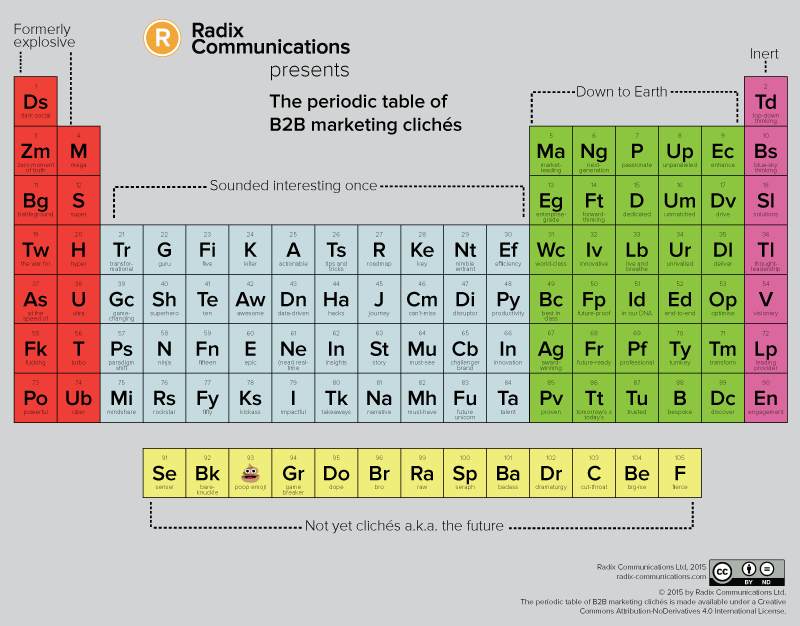In the red corner, John Watton of Silverpop urges marketers to:
“Stop: believing that people have the time to read, re-read and digest deep content. Start: thinking like an entertainment brand, and produce engaging, stimulating, even amusing bite size chunks of content.”
And here’s the newly-crowned president of the CIPR (and all round good bloke) Steve Waddington, telling us that:
“Stories written for the small screen should not run to more than a couple of screen lengths. 300 words is about the limit.”
Meanwhile, in the blue corner, gurus like Joe Pulizzi of the Content Marketing Institute and Barry Adams of Pierce Communications are predicting the comeback of long-form content. Here’s Joe Pulizzi:
“Longer-form, truly helpful content is back in vogue. I think you’ll see less shorter posts and more impacting 1,000+ word posts.”
And Barry Adams says that we’re about to start seeing:
“Less cheap and nasty content, and more crafted pieces of work – be it long form, interactive articles, or rich media.”
All these chaps are titans of the marketing and communications world, and you should read all these blog posts because they all make incredibly good points.
So how long should content be?
But that doesn’t help answer the question: now that everyone apparently has the attention span of a greenfly, should we make content short so people don’t have to make an effort to take it in, or make it long so that if they do happen to take it in, it actually gives them something valuable?
My own view is: THIS IS ENTIRELY THE WRONG QUESTION.
It all comes down to interestingness
Instead, we should ask: How interesting is this thing I want to convey to my target audience?
And by ‘interesting’ I mean things like: how useful will it be to the person I want to read it? Will it solve a problem they have, or help them do something they want to do? Will it inspire them to take action that will change something for the better?
They key phrases here are: “to my target audience” and “to the person I want to read it”. These are the people you need to have in mind when asking these questions. If you don’t know who these people are, it’s not time for you to create content yet. Go and build personas first.
So ask yourself the question, be honest with the answer, and create content thus:
If the thing is mildly interesting to the target audience – an unusual statistic, or something that confirms some suspicion they may have about the world – make a piece of short-form content, like an infographic, or meme. Just enough for someone to see it, stop for a moment, and think “Huh”. If you’re lucky, they may share it with others who may also be mildly interested and stop for a minute and think “Huh”.
(If 10,000 people are mildly interested, it might even go viral. Facebook, Tumblr and Pinterest are built from things that are mildly interesting to thousands of people. Never underestimate the power of mild interest.)
If the thing is quite interesting to your target audience – if you have a good tip for doing something a better way, or something that might make their lives a bit easier – think about mid-length content. Someone who’s quite interested in something may well watch a three-minute how-to video, or read a 500-word blog post.
If the thing is very interesting to your target audience – for example, if they’re currently looking for a new project management system, and your business sells project management systems – they’re going to be quite happy to look at long-form content: stuff like ebooks, case studies, and demo videos. They have a duty to research these things properly, after all. Just try to make it accessible and enjoyable to read/watch – they’ll thank you for it. (They might even buy your product.)
If the thing is madly, desperately interesting to the target audience – if they have a terrible problem that ONLY YOU can solve, or an aspiration that ONLY YOU can help them fulfil – they will clamber over dead bodies to get at your content, even if it’s 10,000 words long. Even if you type it in 2pt Goudy Stout and show it to them through a keyhole (for that authentic ‘reading content on a BlackBerry’ experience), they will still read it, because they WANT IT THAT BADLY.
It’s not science
It’s not rocket science; it’s not even science. The more interesting a thing is, the more time people will be willing to spend engaging with it.
That’s what I find slightly perplexing about John Watton’s comment about entertainment brands producing “engaging, stimulating, even amusing bite size chunks of content”. It’s true that entertainment brands produce bite-size chunks of content. They also produce three-hour films that people flock to see, epic TV series that people consume in marathon box-set sittings, and wildly popular novels that are chunky enough to prop open a door.
People haven’t lost the ability to focus – if the thing they’re focusing on is interesting enough.
So in my view: match content length to interestingness, and you can’t go far wrong.
PS For more on this topic, have a listen to our recent podcast, where we discuss content length (and tips for being concise) with David McGuire.


